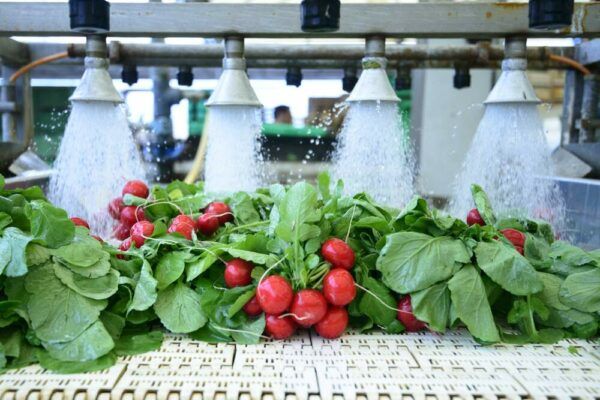Food & Beverage
PROVIDING INNOVATIVE MEASUREMENT SOLUTIONS
FOOD & BEVERAGE INDUSTRY
Delivering Safety & Process Monitoring Solutions, You Can Trust
In the realm of the food and beverage industry, guaranteeing product quality and adhering to safety regulations are paramount. We offer a range of innovative solutions designed to provide comprehensive safety and process control, ensuring that your products meet the highest standards while maximizing yields.
With our gas analysis solutions specifically tailored for food and beverage production, you can enhance the quality of your products, boost reliability, and minimize risks to your plant, personnel, and the environment. By employing our advanced technology, you gain valuable insights into the composition and characteristics of gases involved in the production process, allowing you to optimize operations and maintain consistent product quality.
Our solutions enable you to monitor critical parameters in real-time, detect potential contaminants or deviations from desired conditions, and promptly take corrective actions. By implementing our gas analysis systems, you can effectively identify and mitigate risks associated with gas leaks, spoilage, or other hazards, safeguarding the well-being of your workforce and preventing environmental impact.
We know your process and how critical it is for our customers to protect precious and limited resources and keep our global food and water supplies safe.
WE’RE HERE FOR YOU
APPLICATION SUPPORT
Let our Factory Trained and Certified Support Team review your application and requirements. We understand there are times when your process parameters change due to external conditions. This may require adding components to an existing stream or adding a new stream. We offer many high performance, affordable, turnkey solutions for your application. Explore our Application Support.
- MILK & DAIRY PRODUCTION
- PURE AND BEVERAGE GASES, AND GAS BLENDS
- BEVERAGE AND FILL GAS QUALITY
- FERMENTATION, BREWING AND CULTURE CELL
- PRECISE CONTROL OF FAT, PROTEIN AND SUGAR CONCENTRATIONS
- MONITORING MOISTURE AND SOLID CONTENT RATIOS
- SACCHARINE AND TRACE ORGANICS IN WATER
- RETURN and boiler WATER
- DRYERS & END POINT DETERMINATION
-

MILK & DAIRY PRODUCTION
Monitoring gases in milk and dairy production can be challenging. In milk and dairy production, there can be multiple gases that need to be monitored, such as methane, carbon dioxide, and ammonia. Each gas has different properties and requires different monitoring techniques, which can be complex and time-consuming. It is essential to monitor gases continuously to ensure that the production process is running smoothly and that product quality is maintained. This can be challenging, as monitoring equipment can be expensive and requires maintenance to ensure accurate and reliable readings.
Our FT-NIR Process Analyzer ANALECT® DIAMOND MX™ is an advanced analytical instrument that is used in milk and dairy production for the analysis of various parameters in milk, such as fat, protein, lactose, and total solids.
With our LAR™ water quality analyzers deliver:
- Online determination of TOC, COD, BOD
- Robotic injection system
- Optimal for high concentration of proteins and fats
- Up to 6 steam options available
- 100% oxidation of sample at 1,200°C / 2,192°F for better accuracy
- No chemicals or reagents needed
- Flow Sampler for maintenance-free particle separator available
- Free of memory effects and blockages
-

PURE AND BEVERAGE GASES, AND GAS BLENDS
Monitoring Pure Gas, Beverage Gas, and Gas Blends is critical in the food and beverage industry. Our EXTREL™ MAX300-RTG™ 2.0 Quadrupole Mass Spectrometer which ionizes gas molecules and separates them based on their mass-to-charge ratio. The system can analyze gases in real-time, allowing for immediate process control and adjustment. It can monitor fill gas quality, process control, and keep you in compliance.
-

BEVERAGE AND FILL GAS QUALITY
In the food and beverage industry, it is important to monitor the quality of both beverages and fill gas. Our TIGER OPTICS™ Prismatic™ 3 laser-based, multi-species trace gas analyzer is a sensitive and precise instrument used to monitor beverage and fill gas quality in the food and beverage industry.
-

FERMENTATION, BREWING AND CULTURE CELL
Monitoring fermentation, brewing, and culture cell processes is crucial in the food and beverage industry. Our Fixed Magnetic Sector Mass Spectrometer MGA 1200CS™ is an advanced instrument used in the food and beverage industry to analyze the composition of various samples, including fermented products, brewing, and culture cells.
The fixed magnet analyzer ensures rapid, accurate, and stable real-time analysis of up to 16 gas components in less than 1 second. In addition to our single gas inlet system, our optional multi-stream sampler facilitates fast-purging stream selection for 16, 32, 50, or 100 streams. The unique combination of parallel spectrum processing and rapid stream selection positions it as the world’s fastest available process gas analyzer, providing complete stream analysis data every 3-10 seconds (application dependent).
-

PRECISE CONTROL OF FAT, PROTEIN AND SUGAR CONCENTRATIONS
Milk is a heterogeneous substance, and the fat, protein, and sugar concentrations can vary depending on factors such as breed of cow, stage of lactation, and feed. Obtaining a representative sample that accurately reflects the milk’s composition can be challenging, and errors in sample collection can lead to inaccurate measurements. Some measurement techniques can be expensive, particularly for smaller dairy operations. Investing in the necessary equipment and expertise to perform accurate measurements can be a significant expense for some farmers.
Our Full Spectrum GUIDED WAVE™ Lab Spectrometer Lab NIR-O™ is a powerful analytical instrument used in milk production to analyze various parameters in milk, including fat, protein, lactose, and total solids.
-

MONITORING MOISTURE AND SOLID CONTENT RATIOS
Agricultural products such as grains, fruits, and vegetables are often heterogeneous, with moisture and solid content varying across and within batches. Obtaining a representative sample that accurately reflects the product’s composition can be challenging, and errors in sample collection can lead to inaccurate measurements. Monitoring the moisture and solid content ratios in cheese, yogurt, and butter is important.
-

SACCHARINE AND TRACE ORGANICS IN WATER
In food production, it is important to monitor saccharin and trace organics in water. To monitor saccharin and trace organics in water, various techniques are used, such as gas chromatography-mass spectrometry (GC-MS) and liquid chromatography-mass spectrometry (LC-MS). These techniques involve separating the compounds of interest from the water sample and then identifying and quantifying them using a mass spectrometer. The resulting data can then be used to monitor the quality of the water and ensure compliance with regulatory requirements.
Our LAR™ QuickTOCultra™ water analyzer can monitor saccharin and trace organics in water at the parts-per-million (ppm) level. This water analyzer is a total organic carbon analyzer that uses ultraviolet (UV) radiation to oxidize and convert organic carbon compounds in the water sample to carbon dioxide (CO2). The resulting CO2 is then measured by a non-dispersive infrared (NDIR) detector, and the total organic carbon concentration in the water is determined.
-

RETURN and boiler WATER
It is important to monitor return/boiler water quality to prevent system corrosion in the food and beverage industry. Return/boiler water quality can be monitored using various techniques, such as conductivity meters, pH meters, and dissolved oxygen meters. These instruments can detect changes in water quality that can indicate the presence of corrosion, such as increased conductivity, decreased pH, or increased dissolved oxygen levels. Regular monitoring and maintenance can help prevent corrosion and ensure that the water used in production is of the appropriate quality.
Our LAR™ QuickTOCultra™ water analyzer can monitor return/boiler water quality to prevent system corrosion in the food and beverage industry by measuring the total organic carbon (TOC) content in the water. Organic matter in water can lead to corrosion and scaling of equipment and piping, which can reduce system efficiency and lead to product contamination. The water analyzer uses ultraviolet (UV) radiation to oxidize and convert organic carbon compounds in the water sample to carbon dioxide (CO2). The resulting CO2 is then measured by a non-dispersive infrared (NDIR) detector, and the TOC concentration in the water is determined.
-

DRYERS & END POINT DETERMINATION
Monitoring moisture content is important in the food industry because it can help to ensure accurate endpoint determination, improve product yield and production efficiency, and minimize waste. Moisture content is a critical parameter in many food production processes. It can affect the taste, texture, and shelf life of products. Additionally, moisture content can impact the yield and production efficiency of processes. For example, in baking, the moisture content of dough can affect its rise and texture. In meat processing, the moisture content of meat can affect its weight and texture.
SOLUTIONS FOR THE FOOD & BEVERAGE INDUSTRY
CHILLED MIRROR ANALYZERS
OXYGEN ANALYZERS & SAFETY MONITORS
TOC COD BOD WATER QUALITY ANALYZERS
QUADRUPOLE MASS SPECTROMETERS
FIXED MAGNET SECTOR MASS SPECTROMETERS
- MGA 1200CS™










